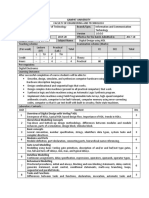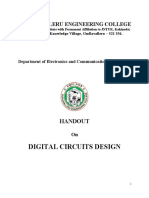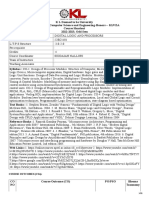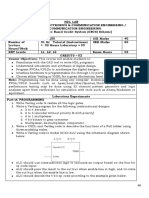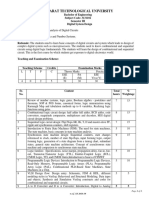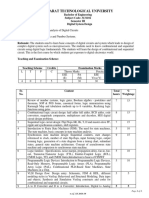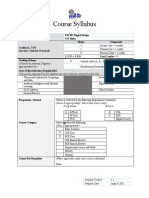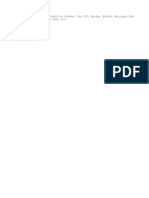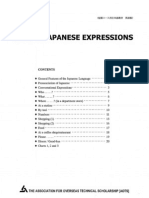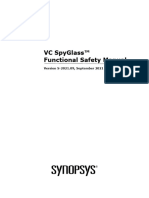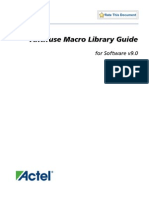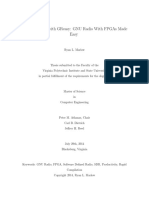Department of Electronics and Communication Engineering
B.M.S. College of Engineering, Bengaluru – 19
(Autonomous College under VTU)
Course Title HDL PROGRAMMING LAB
Course Code 23EC3AEHPL Credits 1 L–T–P 0:0:1
CIE 25 Marks (100% weightage) SEE 50 Marks (50% weightage)
Course Outcomes:
At the end of the course, students will have the ability to:
Sl. No. Course Outcomes PO PSO
CO1 Apply the knowledge of HDL programming for modeling and functional 1, 5 3
verification of Digital circuits using EDA tools.
CO2 Analyse digital circuits using suitable Verilog HDL modeling using 2, 5 3
EDA tools.
CO3 Design and synthesize a digital circuit for complex systems using EDA 3, 5 3
tools.
CO4 Involve in independent / team learning, communicate effectively and 9, 10, 12 3
engage in life long learning
List of Experiments
1. Introduction to Vivado FPGA Tool Suite
2. Gate-level modelling: Half adder, Full adder
3. Gate-level modelling: Multiplexers and demultiplexers
4. Gate-level/Dataflow modelling: Decoders
5. Dataflow modelling for 2-bit magnitude comparator
6. Data flow modelling: Ripple Carry adder
7. Dataflow modelling: Carry Look-ahead Adder
8. Structural Modelling: Multibit Subtractor (using Adder)
9. Behavioural modelling for multibit magnitude comparator
10. Behavioural modelling for Encoder with and without priority
11. Behavioural modelling: SR latch, JK and D flip-flops
12. Behavioural modelling: Universal Shift Register
20
� Department of Electronics and Communication Engineering
13. Behavioural modelling: Synchronous Counters
14. Structural Modelling: Asynchronous counters
15. Behavioural modelling: Sequence detection
Text Books:
1. “Verilog HDL: A Guide to Digital Design and Synthesis”, Sameer Palnitkar, 2nd Edition, 2003,
Pearson.
Reference Books:
1. “Fundamentals of Digital Logic with Verilog Design”, Stephan Brown and Zvonk Vranesic, 2nd
Edition, 2008, McGraw-Hill.
21







